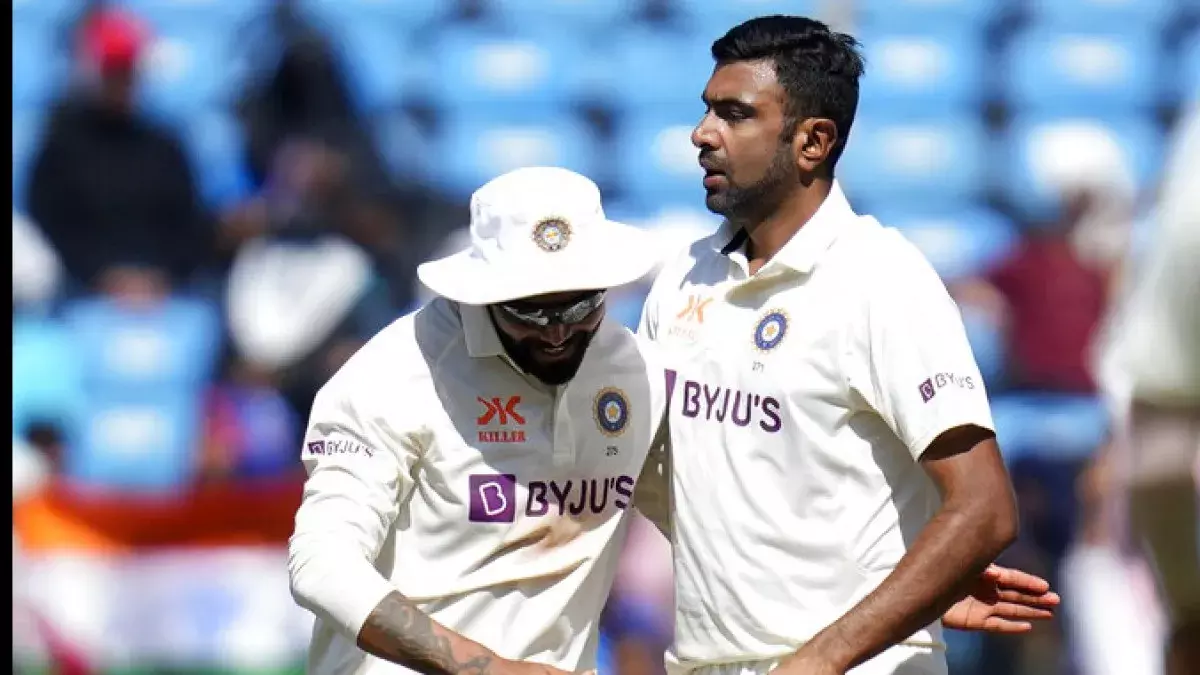Ashwin, Jadeja Continue The Rich Indian Spin Tradition
Heartening performance

Watching Ravichandran Ashwin and Ravindra Jadeja bowling in tandem with great success during the India-Australia Test series I was fascinated by the fact that the Indian spin tradition is still so strong. Despite the metamorphosis in the pace attack ever since the advent of Kapil Dev in the late 70s the Indian spin ethos has been carefully nurtured over the years.
These days of course it is a different scenario in the pace department, which is an embarrassment of riches, a far cry from the days when India’s opening bowlers included the likes of M.L Jaisimha, Salim Durrani, Ajit Wadekar, MAK Pataudi, V. Subramanyam and Budhi Kunderan. And while the success of the pacemen has meant that the Indian attack is balanced and constitutes perhaps the strongest ever in Indian cricket history it is heartening to see that the traditional strength of Indian bowling – spin – has not been pushed into the background.
India has produced the largest number of great spin bowlers who have displayed infinite skill and variety while exhibiting their art and craft. Right from the pioneering days of the 40s when Vinoo Mankad established himself as the finest left arm spin bowler in the game the tradition has been maintained. In the 50s Mankad was joined by Ghulam Ahmed and Subash Gupte and this constituted the first great Indian spin trio.
By the time they called it a day around 1960 Chandu Borde, Salim Durrani and Bapu Nadkarni saw to it that Indian spin bowlers were still the dominant force. But the apotheosis of spin bowling came about from the mid 60s with the formation of the famed spin quartet of Bishen Bedi, Erapalli Prasanna, B.S Chandrasekhar and S. Venkatraghavan.
With very little support from the batting and with the pace bowling being a farce the quartet took the entire burden of the bowling on their shoulders. They were the stock bowlers and the wicket takers, shaping Indian victories not only at home but abroad.
As the former Wisden editor Scyld Berry has noted succinctly, “Then occurred one of the strangest coincidences in cricket. A quartet of spinners who were to turn Indis from a second rate cricket power into a world force emerged simultaneously.”
When the quartet broke up in the late 70s there was trepidation in Indian cricket circles. Where would we find replacements for such outstanding bowlers was the question.
But in the best traditions of a long established line adequate replacements were found in Dilip Doshi, Maninder Singh and Shivlal Yadav who carried India’s spin hopes through the 80s. In the 90s even as the dominance of pace became more pronounced, Anil Kumble and Venkatpathi Raju saw to it the spinners not only still finished among the wickets but also won matches.
Kumble the leading spin bowler since the quartet had a long and successful career that went well into the first decade of the new millennium and for most part of this period he had Harbhajan Singh as a more than able partner.
Even as Kumble retired and Harbhajan’s powers were waning along came first Ashwin and then Jadeja and they have succeeded beyond expectations. The wicket taking abilities of both are second to none and the fact that they are also genuine all rounders makes them invaluable to the team.
Most important, however, is the manner they have carried on the glorious Indian spin tradition even if at times they have had to share the honours with pacemen particularly in away matches.
To be candid, the stats and the feats associated with Ashwin and Jadeja are of the mind boggling and eye rubbing variety. In this regard they have outstripped every other great Indian spinner and they still have some way to go. One would never have thought that India would produce not one but two spin bowlers with such an awesome record so much so that one averages five wickets a Test after figuring in 92 games and the other four wickets a Test after playing 64 matches.
Yes, there is a disparity between their home and away figures but that is true of any bowler however great he might be. As match winners they are peerless certified by the number of man of the match and man of the series awards they have won. Yes, they have been more than handy with the bat with Ashwin getting five hundreds and Jadeja three, but the focus has always been more on their bowling.
Ashwin of course had taken the art and craft of spin bowling to another level altogether with his infinite variety earning him the title of “spin scientist”. He is always thinking, always working out ways to dismiss the batsmen. He is clearly an all time Indian great but not far behind is Jadeja.
It is gratifying to note that they will still be around for some more time. Ashwin is 36, Jadeja 34 and as the saying goes spin bowlers keep improving with age. In any case there is little doubt that even after they retire the Indian spin tradition will continue.
The foundation is so strong and durable that there is never any chance of it fading away let alone grinding to a halt. With all the comparatively new found fascination for pace bowlers it is the spinners who will continue to uphold the Indian flag the highest in the international arena.



